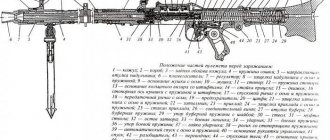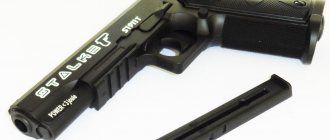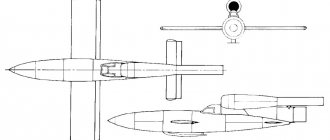Guys during the Russian Empire
In 1712, Peter the Great also indicated the use of the approved flag as the Kaiser flag (kaisers flag) - a banner that is raised on ships if there is an admiral general, grand dukes and other important persons on them. The “Naval Charter” of 1720 finally approved its appearance. This Kaiser flag could also be used as a lifeboat flag.
The cross of the Russian Navy, according to the same “Naval Regulations,” could be raised not only on military ships, but also on auxiliary (“finned”) ships, and on galleys (in this case, the cross was supplemented with “braids”). Now it is difficult to determine whether merchant ships used such a bow flag in Peter’s time.
Without any changes, the guis approved by Peter the Great existed until 1913. Then, by order of Emperor Nicholas II, the design on the standard was supplemented with a black double-headed eagle located in the center of the panel. This type of guy was in force until the February Revolution of 1917.
Guys of the Soviet Union
The Soviet government used flags and fortress flags from the times of the empire until 1924, which was slightly surprising given the total change in historical symbols and names. Then the standard underwent a number of changes:
- In 1924, Peter's drawing of the guy was supplemented with a white circle in the middle, in the center of which a red star shone with a white hammer and sickle at its core.
- In 1932, the design of the USSR guy was radically changed. The banner began to look like a red banner, the center of which was decorated with a large five-pointed star. A smaller red star was placed in its middle, inside which was a crossed white hammer and sickle.
- In 1964, a slight change in the appearance of the guy followed - the large white star with all its contents was displaced, and its size was also changed.
The last option existed until 1992 - in the next paragraph we will talk about the Russian Navy flag.
Literary version
...It was a dark night... Our young cabin boy, after his rescue on the water, could not sleep. Jumping out onto the deck, he saw the boatswain smoking his pipe in the stern.
Well, young man, can’t sleep? It’s been a long time since there was a command “All clear”?; The boatswain looked at him questioningly.
No, I can’t sleep!; answered the cabin boy.
I would like to thank you for saving me!; the cabin boy blurted out warmly and gratefully. You pulled me out of this sea!
I didn’t pull you out of the sea, but from the other world!; answered the old sailor.
By the way, why are you not dressed in uniform? Where is your guy?
Hanging his head, our cabin boy found himself:
I washed it right away!
After a while, he came running back, carrying his dick in his arms.
Well, that's commendable! Do you know what this is?; asked the boatswain.
I just heard that this is a collar... But still, what is this, comrade boatswain?
He chuckled contentedly and invited the cabin boy into his cabin.
Well, sit back and listen!
Young turned all out loud.
Here's what the boatswain said:
There are several stories and legends about the appearance of 3 stripes on sailors’ legs, or as you put it – collars.
At first, in the distant past, on ships, these were indeed collars that were used to protect the backs of rowers from the scorching rays of the Sun and splashes.
The collar also, much later, first appeared as a lining under the hair, protecting the uniform from “powder” falling off the wig, in foreign navies.
After the abolition of wigs, a square cloth collar was used for insulation - in cold windy weather it was tucked under the visor and replaced the cap.
Another legend tells that these three stripes appeared with the appearance of three squadrons under Peter I. It was in honor of these squadrons that three stripes appeared on the guy.
Also, there was a story about three victories of our Fleet, in honor of the three stripes on modern jacks - at Gangut in 1714, Chesma in 1770 and Sinop in 1853.
That is, these victories really took place, but they relate to stripes as a method of patriotic education.
However, guy is, first of all, a FLAG, my friend!
From the Dutch, “guys” is a naval flag, as well as the flag of coastal fortresses. It is raised daily at the bow (on the flagpole on the bowsprit) of ships of the 1st and 2nd ranks, exclusively during anchorage, along with the stern flag, usually from 8 a.m. to sunset.”
Trousers
The trousers of the naval suit have a non-standard tailoring. Consist of front and back halves and a belt. Front halves with side pockets and a lapel fastened to the waistband of the back halves of the trousers with two buttons, or with a fastening with a metal hook and loop and buttons located on the codpiece. Belt with belt loops.
Initially they were made of gray canvas or bleached matting. Currently they are sewn from blue cotton fabric.
Guys of the Russian Federation
Let's briefly look at the most modern part of the history of the Russian bow flag of ships:
- In 1992, Decree of the President of the Russian Federation No. 798 introduced a new type of naval jack - a red cloth with the St. Andrew's and St. George's crosses, which was once invented by Emperor Peter the Great. There was one difference - the stripes of the cross of St. Andrew the First-Called were not originally blue, but light blue.
- In 2000, the Russian Navy guis was returned to the historical color version of the main cross - blue.
Russian border ships use a slightly modified jack - its white edging is three times wider.
Combat number
In accordance with the combat organization of the ship, midshipmen, foremen and sailors are assigned combat numbers, which are entered in the Personnel Numbering Table. The combat number consists of three parts:
Decoding the combat number
The first part (number or letter) indicates in which combat unit (service) the midshipman, petty officer or sailor is located according to the combat alert schedule;
The second part (one, two or three digits) indicates the number of the combat post where the midshipman, petty officer or sailor is located according to the “Combat Alert Schedule”;
The third part (two digits) determines whether the midshipman, petty officer or sailor belongs to the combat shift; the first digit indicates the number of the combat shift, the second digit is the serial number of the midshipman, petty officer or sailor in the shift.
Combat shifts are assigned the following numbers:
First combat shift - 1, 5, 7;
Second combat shift - 2, 4, 8;
Third combat shift - 3, 6, 9.
If there are up to 9 people at a combat post in each combat shift, the numbers 1, 2, 3 are used to designate them, up to 18 people - 1 and 5, 2 and 4, 3 and 6, up to 27 people - 1, 5 and 7; 2, 4 and 8; 3, 6 and 9.
The combat number for wearing on the work clothes of petty officers and sailors is indicated on the soldier’s chest identification card (a white fabric tag sewn to the breast pocket of the work dress).
There are two versions of the origin of the sailor collar. According to one of them, sailors were supposed to wear wigs and grease the ends of their braids with tar. Naturally, the braids touched the clothes and stained them. Sailors were punished for their unkempt appearance, which is why they came up with a kind of collar made from a piece of leather, which was worn over a sailor’s shirt.
According to another version, the sailor's collar was transformed from an ordinary hood, which protected sailors from sea spray in windy weather.
What is guy
The word "guys" comes from the Netherlands. geus - “Gez”, which was the name of the bow flag of the ships of the Gezes, participants in the anti-Spanish revolution in Holland. Over time, it became a household name. Today, the flag of the Russian Navy and other countries is called the bow flag of a sea vessel, which, together with the naval, commercial or civil standard, indicates the nationality of the ship.
The second name of the guy is the bowsprit flag, because at the beginning of its history it was raised on a bowsprit or a special flagpole, called the guypole. Today the huys can be seen on the forecastle of a ship. Also, currently it is mainly used by military ships, but some countries also allow jacks for their civilian ships.
Another synonym for huys, which is relevant, however, not in all countries, is the fortress flag, since it is hoisted at coastal fortresses and other important objects on the shore. Guys is also called the mooring flag, because it mainly identifies moored ships rather than ships underway.
Origin of Russian guy
Guys appeared in the Russian Empire in 1658 - after Peter the Great visited the Kingdom of England during the Great Embassy. The flag was supposed to symbolize the power and greatness of the young Russian fleet, which is why its appearance was chosen in the likeness of the flag of the most powerful maritime union - Britain and Scotland, which we examined in detail above.
On the Russian guis, in contrast to the symbol of union, the cross of St. Andrew the First-Called dominated over the cross of St. George, and not vice versa. This was done because it was from Saint Andrew, according to Peter, that Rus' received baptism. This cross also had a symbolic meaning - at the time of the creation of the guis, the state already had access to four seas. That is why the first Russian Order of St. Andrew the First-Called was approved in the form of the same four-sided oblique cross.
The use of this nasal flag, which became the prototype of the modern flag of the Russian Navy, began in 1701. His image was also used as a serf standard for forts and other coastal sites.
World history of guys
During the Middle Ages, guises spoke of the home port of a particular ship. The first nasal flag is considered to be the guis of the Prince of Orange, which was mentioned in 1572 when describing the capture of the town of Den Bril by the Geese, the first liberated from the Spaniards. However, the characteristics of the guy have not been preserved - there is an assumption that its appearance copied the flag of the House of Orange - orange, white and blue equal horizontal stripes.
One of the most famous jacks was the bowsprit flag of the union of England and Scotland, which adorned ships in 1634-1707. The symbolism of the Scottish flag of St Andrew (a white inverted X on a blue background) was superimposed with the symbolism of the English flag of St George (a red cross on a pure white background). Guys in some ways became the prototype of the future flag of Great Britain. It was supposed to fly only on warships, which is why it was nicknamed “Union Jack” (“union jack”); merchant ships had the right to display only the flag of St. Andrew or St. George, depending on their affiliation with the country participating in the union.
Now let’s move smoothly to the history of the Russian Navy jack, first of all becoming familiar with its origin.
Shirt
The naval suit shirt (introduced by order of the RVSR No. 2443 of October 27, 1921. The cut of the shirt was confirmed by orders of the RVS of the USSR No. 006 of January 5, 1925 and by the Red Army Navy No. 52 of April 16, 1934) was originally sewn from gray canvas or bleached canvas. It consisted of a one-piece front and back without seams with a straight stand-up collar with a button and loop fastening, and straight sleeves without cuffs or cuffs. The front slit of the shirt was closed with straps fastened with two buttons and loops. On the left side of the chest there was an adjustment pocket without a flap.
The uniform shirt is worn with a fastened uniform blue collar.
Since about the mid-70s of the 20th century, the appearance of the shirt has changed slightly. The front and back are solid. The front has a top patch pocket on the left side and an inside pocket on the reverse side. In the upper part of the front, in the middle, there is a slit fastened with one button loop. At the end of the cut, on the inside, there are two buttons, and on the back, near the neck, there is a loop for fastening a uniform collar. Wide turn-down collar. Sleeves are set-in, straight.
A uniform collar is also called a collar
.









